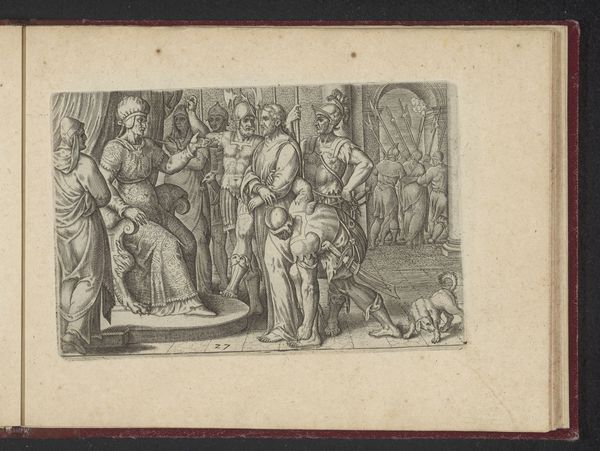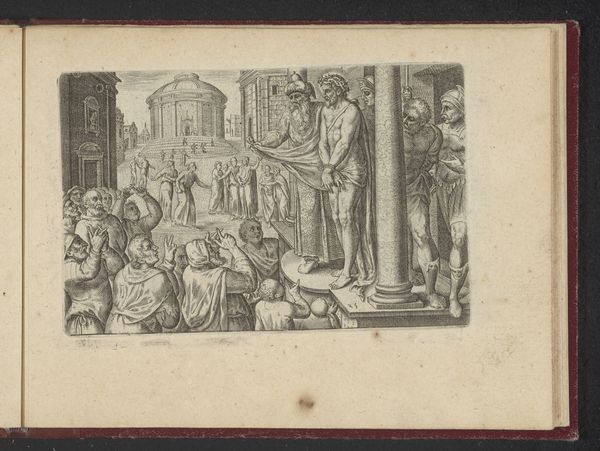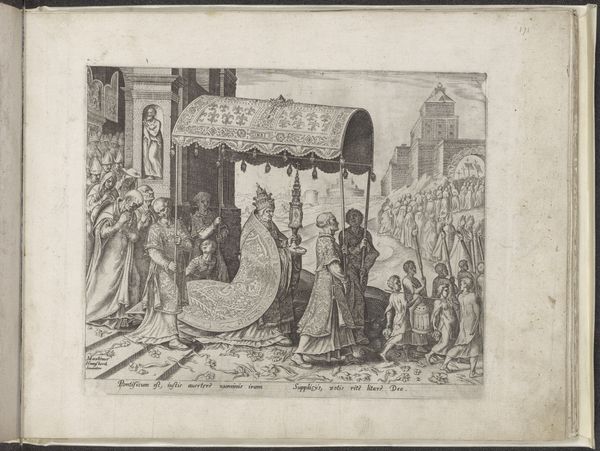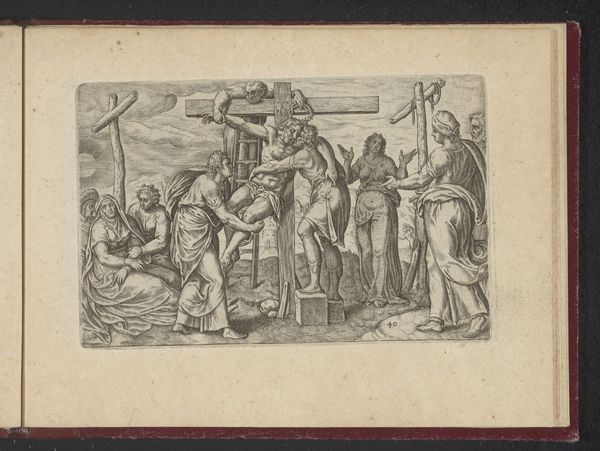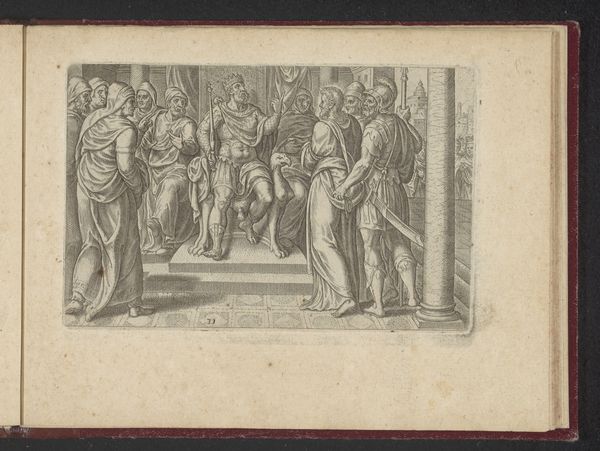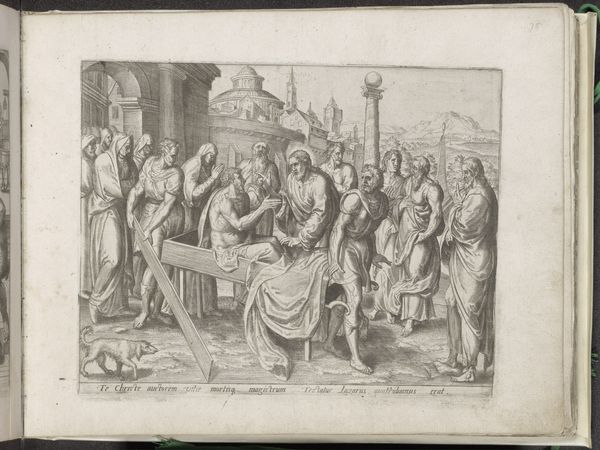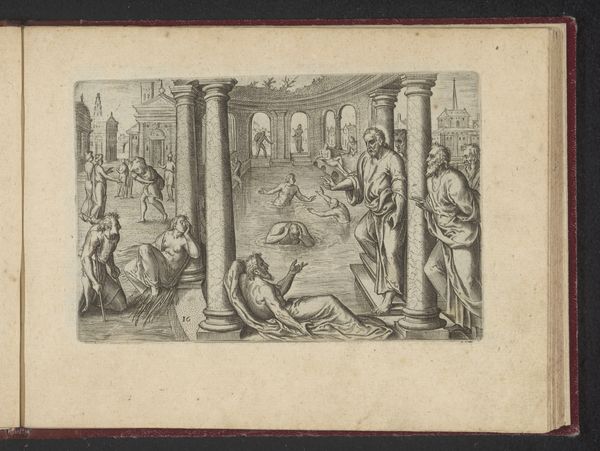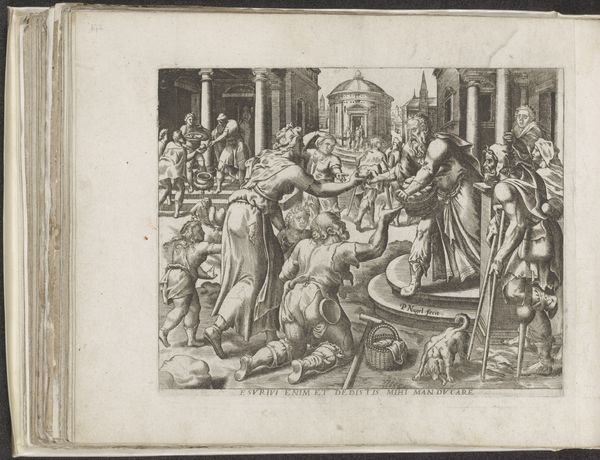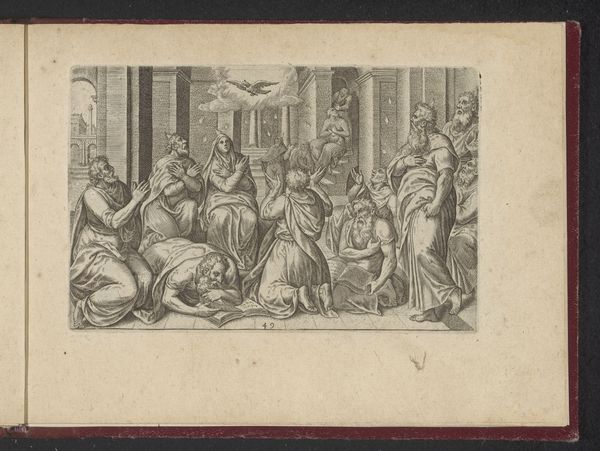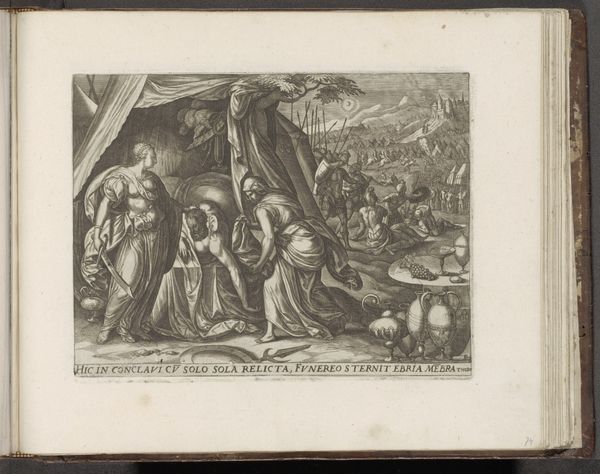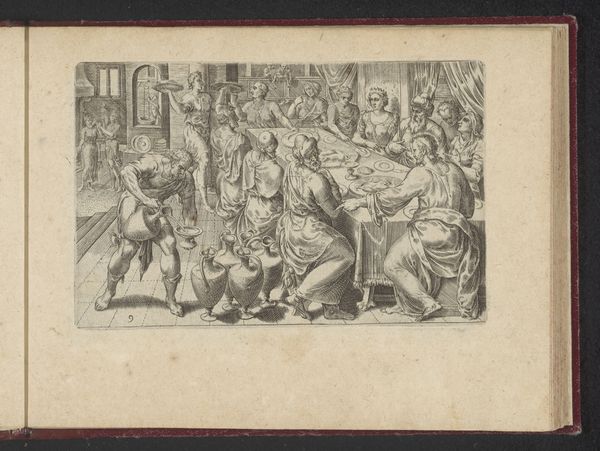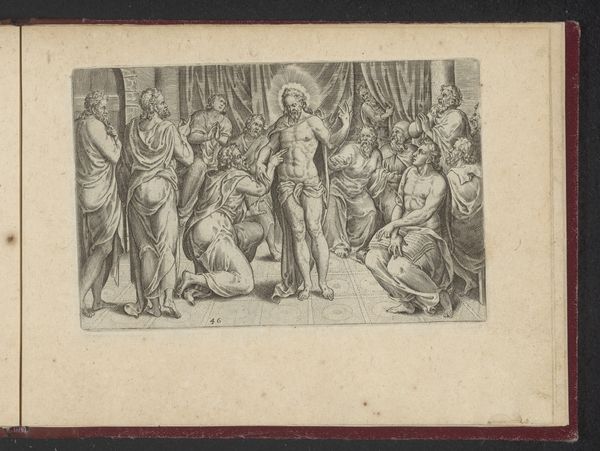
print, engraving
#
narrative-art
# print
#
mannerism
#
figuration
#
line
#
history-painting
#
northern-renaissance
#
engraving
Dimensions: height 92 mm, width 139 mm, height 137 mm, width 183 mm
Copyright: Rijks Museum: Open Domain
Editor: So, this is Philips Galle’s "Christus geneest de bloedvloeiende vrouw" from 1573, currently housed at the Rijksmuseum. It's an engraving on paper, and what strikes me is the incredibly intricate linework and the overall composition, especially the division of space. It feels very staged, theatrical even. How do you read this piece, considering its formal elements? Curator: A penetrating observation. Indeed, Galle meticulously constructs the visual plane through contrasting textures and tightly controlled line work. The engraving technique lends itself to a graphic quality where tonal variation is limited, thus focusing the gaze upon shape and form. Note how the artist segments the narrative across distinct spatial zones. Do you perceive any semiotic tension between these zones? Editor: I think so. The left feels very classical, with architectural structures and almost stoic figures. Then you have the supplicant woman kneeling, connecting that structured space with the crowded area on the right, with dramatic gesturing figures set against the backdrop of this detailed city. Curator: Precisely. The formal arrangement acts as a signifier, encoding distinct ideological spheres. Galle's work exemplifies Mannerist principles; notice how naturalistic proportions are knowingly distorted to amplify expressive effect. The exaggeration of gesture and the compression of space serve not to replicate reality, but to communicate a heightened emotional register. How might the limitations inherent in the engraving process, where it uses primarily the quality of line, play into the artist’s intent? Editor: Perhaps the reliance on line forces the viewer to actively participate in constructing the scene, almost like filling in the emotional blanks using those very gestures and compressed spaces as cues. Curator: An astute summation. Through structural organization and graphic rendering, the artwork invites an engagement not just with the biblical subject matter, but with the very mechanics of visual signification. Editor: I see. It is the visual language itself that becomes the dominant message here. Thanks so much! Curator: My pleasure! It has been a pleasure discussing Galle's use of form and structure.
Comments
No comments
Be the first to comment and join the conversation on the ultimate creative platform.
